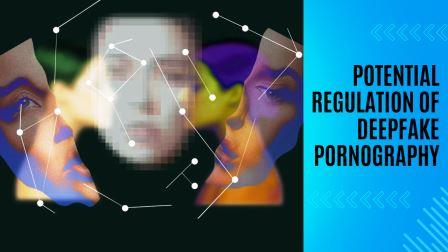In the rapidly evolving digital landscape, the advent of deepfake technology has ushered in a new era of synthetic media creation, blurring the lines between reality and fiction. While this technology holds immense potential for creative expression and innovation, its misuse has given rise to a disturbing phenomenon – deepfake pornography. As the viral spread of AI-generated explicit content featuring celebrities like Taylor Swift has demonstrated, the potential for harm and exploitation is alarmingly high, prompting urgent calls for federal legislation to address this emerging threat.
What Are Deepfakes?
Deepfakes are synthetic media created using artificial intelligence (AI) algorithms. These algorithms analyze and manipulate existing images or videos to replace faces, voices, or entire bodies with other content. The result is often a seamless and convincing alteration that can be difficult to distinguish from genuine content.
The Rise of Deepfake Pornography
Deepfake pornography involves superimposing the faces of real individuals onto explicit content. It has become increasingly prevalent due to the accessibility of AI tools and the internet. Celebrities, politicians, and ordinary people have all fallen victim to deepfake pornographic material. The consequences can be devastating, affecting reputations, relationships, and mental health.
Privacy and Consent
One of the central issues surrounding deepfake pornography is the violation of privacy and consent. Victims find themselves exposed in compromising situations without their knowledge or permission. Existing laws struggle to address this new form of harm effectively. Here are some key points:
- Consent Challenges: Traditional consent laws were not designed to account for deepfake technology. Consent given for one purpose (e.g., a photoshoot) does not necessarily extend to deepfake use.
- Informed Consent: Legislators must consider how to ensure informed consent specifically for deepfake content. This involves educating individuals about the risks and implications.
- Nonconsensual Pornography Laws: Some jurisdictions have enacted laws against nonconsensual pornography (revenge porn). However, these laws may not cover deepfakes comprehensively.
Legal Approaches
Regulating deepfake pornography requires a delicate balance between protecting victims and safeguarding free speech. Here are potential legal approaches:
- Criminalization: Some countries have criminalized the creation and distribution of deepfake pornography. However, enforcement remains challenging due to the global nature of the internet.
- Civil Remedies: Victims can pursue civil lawsuits against creators and distributors. Courts may award damages and issue injunctions to remove content.
- Platform Responsibility: Social media platforms and hosting services play a crucial role. Policies regarding deepfake content need clarification and consistent enforcement.
Challenges and Future Directions
- Technological Advancements: As deepfake technology improves, detecting and combating deepfakes becomes more complex.
- International Cooperation: Global cooperation is essential to address cross-border issues related to deepfake pornography.
- Balancing Rights: Legislators must balance the right to privacy with freedom of expression.
Conclusion
The potential regulation of deepfake pornography is a pressing issue. Striking the right balance between protecting individuals and preserving free speech remains a challenge. As technology evolves, lawmakers, tech companies, and society must work together to find effective solutions. Only then can we mitigate the harms caused by this powerful yet dangerous technology.
Remember, the line between reality and deepfake is becoming increasingly blurred. Vigilance, education, and legal reforms are our best defenses against this digital threat.
Disclaimer: This blog post is for informational purposes only and does not constitute legal advice. Consult a legal professional for specific legal guidance.
